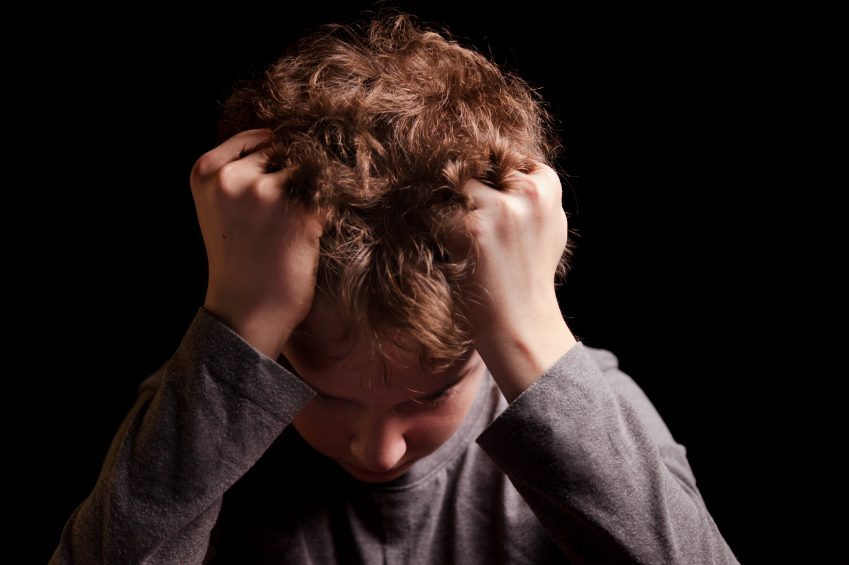Doing What We Ought To Be Doing Already: An Approach To World Suicide Prevention Day

Posted in: Hot Topics, Teenagers, Young Adults
Topics: Depression, Mental Illness + Psychiatric Disorders
September 10th is World Suicide Prevention Day.
That seems straightforward enough.
Suicide is awful, more common than you’d think, and in many cases, highly preventable.
Perhaps most important, in virtually every culture and every ethnic group on the planet, suicide is highly stigmatized. It therefore makes sense for the international health community to designate a day when we stop to actively contemplate this potent cause of misery and death.
The statistics are staggering. For a summary of the facts numbers, and what we can do to prevent suicide look at the US Center for Disease Control (CDC) website at https://www.cdc.gov/suicide/facts/index.html Here’s a primer:
- Suicide rates skyrocketed about 36% between 2000 and 2022 accounting for 49,476 deaths in 2022 about 1 death every 11 minutes.
- This number is probably under-reported, given the stigma associated with suicide, and the fact that deliberate, self-harming behavior is often misclassified as an accident. The teen that drives into a streetlamp at 100mph could very well be attempting suicide, and not be the victim of an automobile mishap.
- Suicidal thoughts, and among 9th to 12th graders who seriously consider suicide is alarmingly much higher: in 2023 about 20%; those making a plan about 16%, and those who attempted suicide 9%.
- Suicide is the second leading cause of death for young people10-14 and 25-34.
- Suicide has its highest rates among non-Hispanic American Indian/Alaska Native people followed by non-Hispanic White people. Other high-risk groups include are folks that live in rural areas, veterans, and LGBTQ individuals. The average number of Veteran suicides per day rose from 16.4 in 2001 to 16.8 in 2020.Among LGBTQ individuals, 45% seriously considered suicide in the past year
Risk and Protective Factors:
Numerous studies have documented known conditions and situations that make suicide more likely:
- Suicide has been tied to: numerous psychiatric illnesses (mostly mood disorders), difficult economic or traumatic situations and environments, serious medical illness (including pain), adverse childhood experiences, substance use disorders (both with and without addiction), the loss of loved ones, loss of a job or financial hardship, criminal or legal hardship, bullying, loneliness and social isolation, lack of access to healthcare, media portrayals of real or fictious suicides (copycat phenomena), access to firearms (especially handguns), and to a lack of good follow-up care following suicide attempts, among others.
- The number one predictor of death by suicide is a previous attempt.
Other studies have clearly demonstrated what is protective for suicide:
- Effective behavioral health care
- Connectedness to individuals, family, community, and social institutions
- Life skills: Problem solving skills, coping skills, ability to accept change
- Positive self-esteem and a sense of purpose or meaning in life
- Cultural, religious or personal beliefs that discourage suicide
In other words, we know a lot about suicide. We know how commonly it occurs, we know more or less what causes it, and we have a sense for how to prevent it.
All of this, then, begs an important and vexing question:
If we know so much about suicide,
If suicide appears to be preventable,
If central intervention for preventing suicide is increased awareness, communication, and treatment,
Why does suicide remain so stubbornly common?
The answer to this question is actually much less concrete than we might think. Studies on post-suicide-attempt intervention are lacking and under-represented. Studies on pre-suicide-attempt intervention are also insufficient in generating a simple and generalizable prevention methodology. Moreover, the likelihood of creating a one-size-fits-all approach is minimal. This might be why we know less than we’d like to.
There are studies that show that email, phone, and in-person communication following an attempt can make a potent and positive difference, but these studies have relatively low numbers of participants and clearly need follow-up. We also have studies that show that we can increase the understanding of suicide and its risk factors in high schools and colleges, but it isn’t clear whether this understanding leads to decreased suicide rates.
We do know that treatment as usual—that is, telling someone to go to an appointment with a yet-to-be-met clinician following his or her discharge from an emergency room or hospital—falls short of other more personal interventions.
All of this points to a common flaw in the understanding of suicide. Suicide isn’t a formal disease; we don’t treat suicide itself. We treat the causes of suicide.
Therefore, clinicians who focus entirely on the risk of suicide but fail to pay attention to its underlying causes may not minimize risk. Just as we focus on decreased smoking to help prevent the incidences of lung cancer and heart disease, we need to more deliberately focus on and take pre-emptive action toward combating the causes and risk factors for suicide in order to truly decrease its tragic outcomes.
The three main risk factors for suicide are relatively common in Western nations. They remain 1.) a previous attempt, 2.) a psychiatric illness, most commonly depression, and 3.) a co-existing substance use disorder. Most interpret the presence of substance use as enhancing the impulsivity that can lead one to take the final steps toward a life-threatening event. This may be particularly true for adolescents and young adults, given the impulsivity that is a natural consequence of their immature brains, and their tendency to act on emotional triggers.
In non-Western nations, the risk factors are roughly the same, though poverty, impulsivity and anxiety, as well as social taboo may play more prominent roles.
In other words, suicide has a lot of moving parts; prevention with certainty is extremely difficult.
So, where does all this leave us? What can we really do to prevent suicide?
Well, we can look more closely and critically at what we don’t do (or at least don’t do enough of) to prevent those pre-existing causes.
And let’s consider specifically what we, as parents and caregivers, can do to prevent suicide among our kids.
While we’re going to cite several screening methods for unearthing risk, you should not feel that screening is entirely your obligation. Many of these methods involve the careful evaluation of a clinician. More importantly, it is exceedingly difficult to examine your own kids in a clinical manner. Parents know their kids best, but parents are also necessarily biased when they think about their kids. If you’re worried, if you notice something alarming, get help. Talk to your primary care doctor or a mental health professional.
Leading Causes of Suicide:
We should start with the leading causes of suicide. Since the most prominent risk factor is a previous attempt, we need to examine what leads to that first attempt. That brings us next to the prevention and early detection of the psychiatric and social etiologies of suicide. This approach makes the prevention of suicide more organized and directed. Let’s outline these issues one by one:
- Depression: we know that suicide is associated with depression, both treated and untreated. We know as well that treating depression significantly decreases the rate of suicide attempts and deaths by suicide. This is true for all ages, but depression is much more likely to be missed in children and adolescents, as it tends to look a lot different. Although children and teens with depression may have a depressed mood, they are often irritable or agitated. Sleep and appetite, commonly decreased in adults, may actually increase in younger individuals (see our blog on depression in kids for more). Finally, because each episode of depression, and especially each episode of untreated depression, worsens subsequent bouts with the illness, early detection and ample treatment is absolutely essential. To this end, we must aggressively detect depression if we are to make any progress in the battle against suicide.
- Treatment of mood disorders: There is evidence that even with ample detection, adequate treatment of mood disorders can fall short of the existing standards of care. This is due to lack of access, reluctance to use antidepressants (especially after the addition of the black box warning), lack of available psychotherapy due to a severe national shortage of clinical mental health providers (or an unwillingness to participate in psychotherapy), and, of course, stigma.
- Recognition, treatment, and education regarding substance use: A substantial proportion of suicides are associated with the abuse of substances (this doesn’t necessarily mean, however, that every death by suicide involving substances occurs among individuals who are addicted to those substances). Regardless, we need to be better at helping others understand that mixing substances with a low or angry mood disinhibits what might otherwise be the self-control to prevent self-harm and death.
- Eating disorders and suicide: Eating disorders are more common than most people realize—and also harder to detect. We know that the presence of an eating disorder is associated with both attempted suicide and death by suicide. In fact, the most common cause of death in anorexia nervosa is suicide, especially when coupled with alcohol use. The longer an individual suffers from anorexia nervosa, the greater the risk of death by suicide. We also know that when you control for co-existing illnesses like depression, anorexia drops out in many studies as an independent risk factor. This means that among those who suffer from anorexia, the presence of depression is particularly alarming and requires special vigilance. Also worrisome is the fact that bulimia nervosa is associated with suicidality in the absence of any co-existing mood disorders—meaning that all individuals with eating disorders require focused suicide screening.
- Head injuries: Increased concern for head injuries has elucidated clear relationships between concussion, traumatic brain injuries, and increased suicide risk. Whenever anyone is suspected of suffering from a head injury, it is essential that we screen for suicidal thoughts and co-existing risk factors.
- Social factors: There are entire books written about the social factors that contribute to suicide. Poverty, crime, and trauma from war, famine, domestic assault, and sexual attacks have all been implicated. One of the most significant risk factors for suicide is Adverse Childhood Experiences (ACEs, including exposure to childhood abuse and neglect, witnessing domestic violence, parental separation or divorce, residing with a parent who abuses substances, having an incarcerated parent) and this may increase the risk in any one category 2-5 fold). Sociological phenomena such as copycat suicides and suicide clusters also pose potent risk. Interestingly, though not surprisingly, all of these have in common a lack of personalized social support for those who are suffering. Therefore, any approach to alleviating these risks must occur in a warm and highly personal manner. In fact, telling large groups of suffering people that you are going to help them has been found to actually increase risk. On the other hand, if we devote the time and resources to be personally available, the rate of suicide goes down even in difficult social circumstances. This has been found in settings as varied as high schools and military gatherings.
What About Prevention?
The CDC indicates that these measures are critical for preventing suicide based on the risk factors noted above, and making attempts to mitigate their negative impact on individuals:
- Strengthen economic supports: Including helping families to be more secure financially and improving housing
- Create protective environments: such as reducing access to firearms, fostering supportive communities (places of worship, clubs, increasing green space for gatherings)
- Improve access and delivery of suicide care: increase the mental health workforce, improve insurance coverage for mental health issues, promote self-care practices, support rapid access to care
- Promote healthy connections: among peers, in community settings
- Teach coping and problem-solving skills: improve social emotional learning curricula in schools, improve parent and caregiver skills to become effective teaching and demonstrating these skills at home
- Identify and support people at risk: working through practice and public policy to decrease discrimination, support marginalized groups such as LGBTQ individuals, and those with chronic illness. And for those who are seriously contemplating suicide, train rapid responders, utilize individuals in the healthcare system to follow, monitor, and promote continuity of care
- Lessen harms and prevent suicide risk: through public mental health education about suicide safety and ensure that post-suicide attempts receive follow-up care.
What Can Parents and Caregivers Do?
- Get corroborating observations: from relatives, teachers, coaches, other parents
- Have frequent, ongoing conversations: Listen, validate feelings, remain supportive and non-judgmental
- Conversation starters: Begin with open ended questions, and then be able to move to specific thoughts, feelings and behavior:
- How have you been feeling? Any changes you have noticed?
- You seem troubled. What’s going on?
- Did anything happen to you recently?
- Ask about specific behaviors you notice, such as isolation, irritability, difficulty sleeping
- Ask about depression, anxiety, trauma, substance use, loneliness
- Always ask about suicidal thoughts, intent, or plan: it is a myth that asking about suicide will promote it. Far from it! Most people who are suicidal feel a sense of relief by talking about the issues
- Ask about attempts
- Ask about anything else “personal or complicated in your life”
So, on World Suicide Prevention Day we can, it turns out, do a lot. Moreover, much of what we can do is what we ought to be doing anyhow. Screening for pre-existing risk factors early in life is essential.
We need to detect and treat psychiatric illnesses more effectively and earlier in life. We need a better approach to the social factors that haunt our planet and put us at risk for suicide. We need to understand and spread the word more effectively about the risk factors for all suicides.
And, most importantly, we need each other. Every single study of suicide and its causes shows that through open, personal, and informed communication, the rate of suicide can be decreased.
We’re pack animals. We need each other. If we educate ourselves and then reach out to those in need, we can make the world a much better place.
A version of this post originally appeared and was written by the authors (Schlozman and Beresin) on WBUR’s CommonHealth.

 Share
Share Tweet
Tweet






